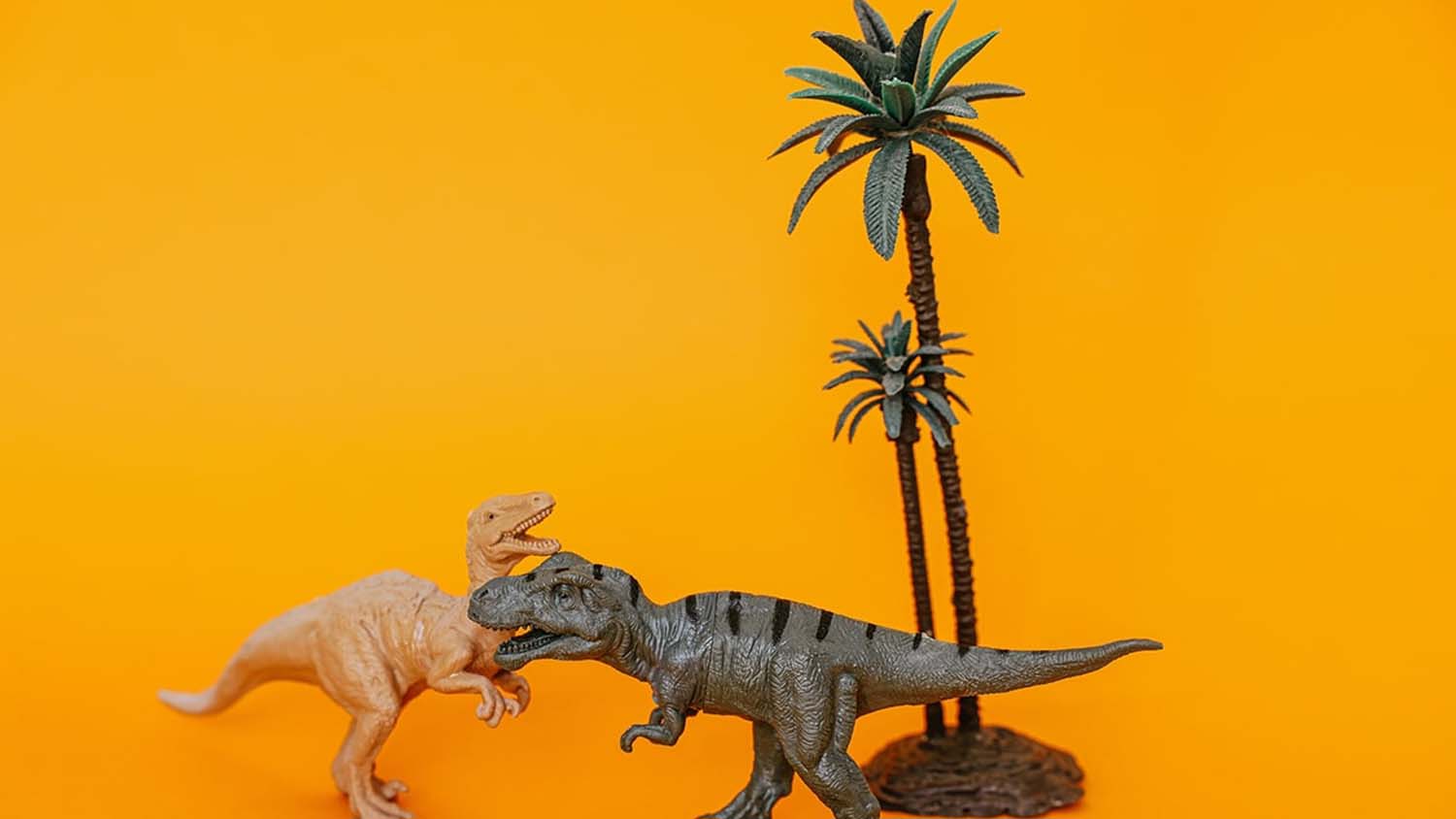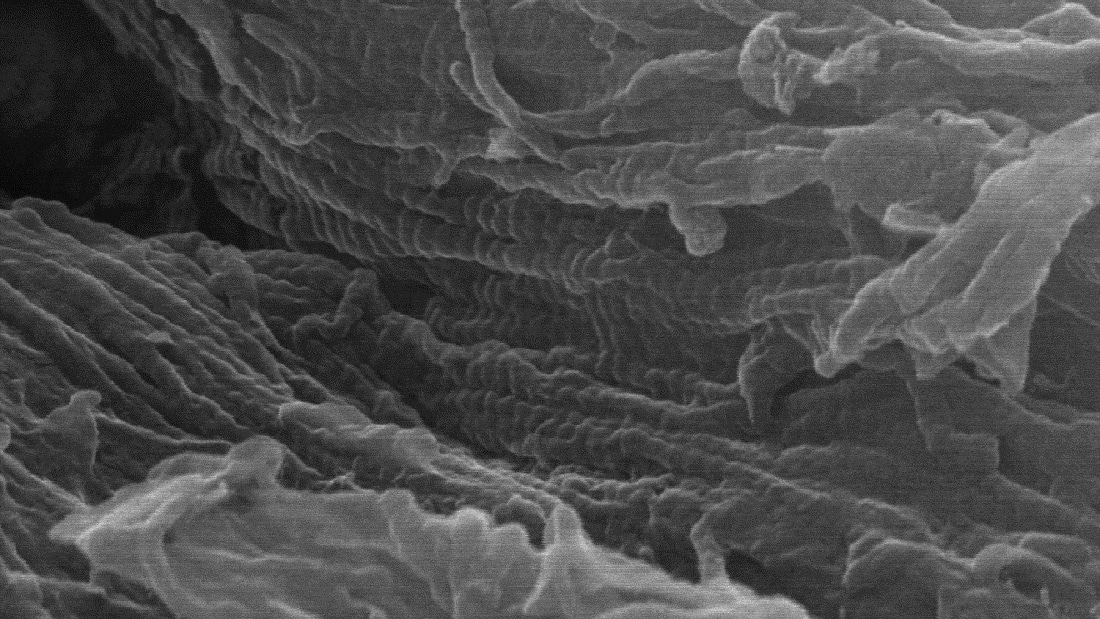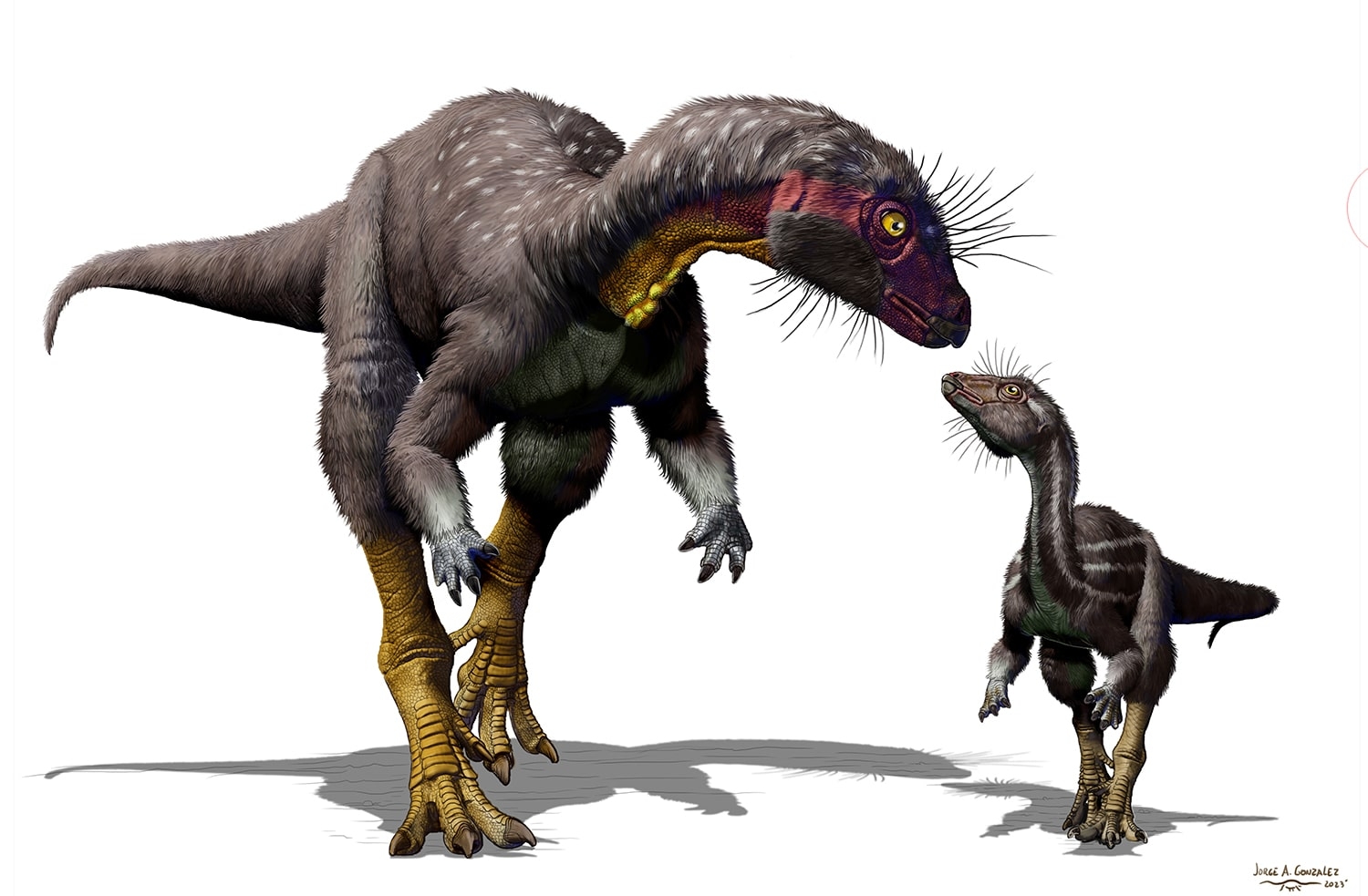If Jurassic Park fueled your interest in dinosaurs, genetics, and all things ancient, you aren’t alone. There’s an entire field dedicated to looking for ancient DNA – molecular paleontology – that predates Michael Crichton’s take on dino clones. And the people behind that research are just as varied and interesting as any of Crichton’s subjects.
In her new book, “Ancient DNA: The Making of a Celebrity Science,” Elizabeth Jones traces the history, people and projects involved in exploring the ancient world and the creatures that inhabited it. Jones is an NC State postdoctoral research scholar and project coordinator for Cretaceous Creatures at the North Carolina Museum of Natural Sciences.
The Abstract chatted with Elizabeth about her work.
TA: So how did this book come about? Were you always interested in science?
Jones: No! When I was an undergraduate at NC State I studied history and philosophy. But I took an elective from (NC State molecular paleontologist) Mary Schweitzer – Dinosaurian World – which was super hard, but fascinating. After that, I took four or five more classes in that field and Mary really took me under her wing. I went to Montana to dig for fossils and volunteered at the museum by prepping fossils. I ended up doing my honors thesis on Charles Darwin and the history of evolutionary biology with William Kimler in NC State’s history department, which combined my newfound love for science with history.
TA: What about her course turned this on for you?
Jones: It’s actually a bit of an embarrassing anecdote. In undergrad, I saw a TV program about a scientist who had discovered ancient proteins in dinosaur fossils. I didn’t catch who it was, so I asked Mary about it the next day in class – ancient proteins? Is it possible? She smiled and said, “Why don’t you watch and we’ll talk about it.” And it was all about her and her work extracting ancient proteins from a T. rex!
What appeals to me about science is that it is a social process, about relationships as much as it’s about the research. Mary’s work was an extreme example – it was just as celebrated as it was criticized – so I wanted to explore the excitement in pushing those limits. Why were people both so on-board and so resistant? That’s the story that pulled me in, the what, why and how science gets done.
TA: What aspects of molecular paleontology do you focus on in the book?
Jones: There’s a rich history of molecular paleo – it covers the extraction of any organic materials from ancient remains. I picked DNA. Mary’s work now is focused on proteins, but as a graduate student she was looking at DNA.
The book is a history of ancient DNA research – focusing on the scientists looking for it in any material: plants, human and animal remains. The field is about 40 years old. It really got started in the late 1970s, early 1980s.
I interviewed over 50 scientists, using their oral histories to trace how this science came to be. It’s a bit about what’s going on in the lab but more about how people respond to what’s going on in the lab: public perception and speculation about what researchers can do with ancient DNA and how that influences grant funding, publications, recruitment and promotion.
I go through a lot of the organisms that have been studied, from dinosaurs to mammoths, early humans like Neanderthals and Denisovans, and even earlier efforts with insects in amber, well before Crichton wrote “Jurassic Park.”
My argument in the book is that this research field is more than a public-facing science, and thanks to “Jurassic Park,” it’s become a celebrity science. Science is a complicated process that involves more than just the scientist. The people in molecular paleo understand that media is a pragmatic component to getting work done. You have to get people interested and on your side just to test the limits in the first place.
TA: What would you say the state of the molecular paleontology field is now?
Jones: That is a super complicated question. A huge part of the book focuses on whether ancient DNA research is a field, or a way of doing science. Is it both? Neither? And it depends on who you ask, from a biochemist or evolutionary biologist who refers to it occasionally versus an ancient DNA researcher who primarily focuses on this sort of material and the techniques necessary to extract and analyze it.
I would say that the state of the field in general is still very competitive with researchers making big discoveries and bold claims. It’s grown enough to have a distinct identity but we’re also kind of back to square one. We know we can sometimes get DNA back to the million year mark, but advances in genomics have opened the doors to test our results again and see if we can go back further. It’s the classic hype cycle of an exciting discovery, a dip, a plateau, and then new tech or ideas comes along and we do it all over again. We’re still figuring it out.
TA: Were there commonalities among folks you interviewed?
Jones: Personality-wise, the researchers I interviewed are adventurous pioneers who aren’t afraid to ask or pursue hard questions. They aren’t safe scientists and they have a high tolerance for risk, which draws them to the field. The common denominator, no matter their background, is they want to reach into the past to see evolution as it happened and molecular paleo is a good way to do that.
TA: What was the coolest thing or factoid you came across while writing the book?
Jones: I think the coolest thing that I’ve found is what I touched on earlier: “Jurassic Park” was so fundamental in pushing this research from an idea to an actual field. When you have a bizarre idea with very little evidence, you need to generate interest and funding to pursue it. “Jurassic Park” came along at just the right time for these risk-taking scientists to jump on. And it wasn’t a one-off. Making the cultural connection between “Jurassic Park” and ancient DNA research over decades was really important to giving researchers the opportunity to see what could be discovered, even though the researchers weren’t really trying to resurrect dinosaurs or even discover dinosaur DNA.
Interesting people doing interesting stuff – that’s how you find out how the world works in all its beauty and weirdness. It’s what drew me to this work.
TA: What would you like to see – the Holy Grail of this research for you?
Jones: What I really want to see is a happy marriage between molecular evidence and our more traditional lines of evidence, like morphology that focuses on the shape and structure of the fossil itself to determine how organisms have changed over time and how they are related to one another too. Right now it’s highly contentious between different types of scientists, a sort of battle over whose evidence (the fossils or the DNA within them) offers a more accurate representation of the past. Any good marriage takes work and we’re still working at it. Fifty years from now, I’d love to see more molecular information and be able to reconcile the two lines of evidence.
This post was originally published in NC State News.
- Categories:



